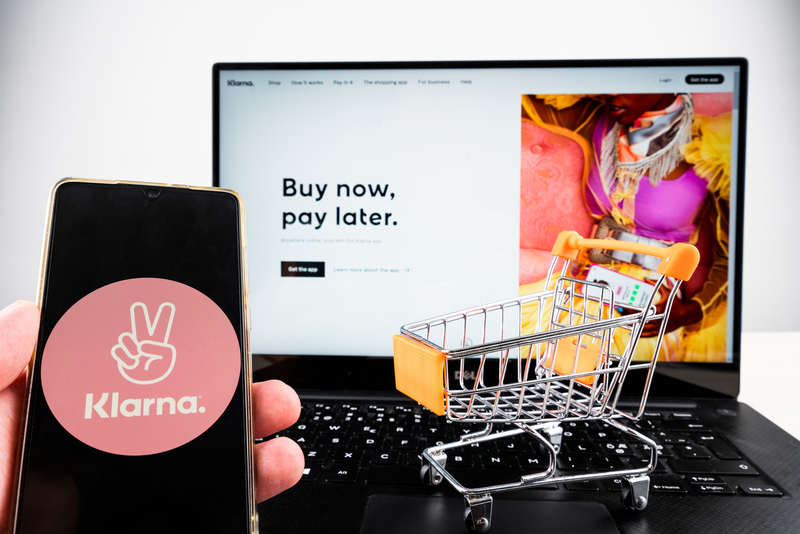
By Zana Busby, Business & Consumer Psychologist
For generations, Britain was proud to call itself a nation of shopkeepers. We built high streets that were the beating heart of communities. We celebrated local business owners who knew our names, remembered our preferences, and often extended us credit when the purse strings were tight.
Fast forward to 2025, and the picture looks different. The rise of online retail, Buy Now Pay Later schemes, TikTok-fuelled “haul” culture, and instant gratification at the click of a button have shifted our national identity. Increasingly, we look less like a nation of shopkeepers — and more like a nation of shoppers.
And we’re shopping hard.
We’ve entered an era where spending is frictionless and often deeply psychological. Shopping is no longer just a transaction. It’s a mood boost, a coping mechanism, a form of self-expression. And increasingly, a source of emotional strain. As a consumer psychologist, I spend a lot of time exploring the ‘why’ behind our buying behaviour.
In recent years, there’s been a profound shift in the emotional and cognitive dynamics of shopping – one that affects individuals, brands, and entire communities.
Naturally, I think about this through a psychological lens: What’s driving our need to buy more? What are we really buying when we spend? And how we can strike a healthier balance with spending, while still enjoying it.
The Psychology Behind Our Shopping Habits
Shopping behaviour is rarely just about logic or need. As a consumer psychologist, I can tell you that purchasing decisions are often driven by deep emotional triggers:
- Identity – We buy to express who we are, or who we want to be.
- Belonging – We buy to fit in with our peers or signal we’re part of a tribe.
- Self-worth – We buy to feel good about ourselves, to “treat” or reward our efforts.
- Control – In uncertain times, buying something tangible can feel like taking charge.
Retailers have long known how to tap into these drivers — but in the age of algorithms and targeted ads, those triggers are being pulled constantly, and often without consumers being aware.

We Live in A Culture of Constant Consumption
There was a time when shopping meant visiting your local high street, browsing intentionally, and maybe saving up for weeks to make a purchase. Retail used to be about occasional, purposeful buying.
Today? The whole landscape has changed. Retail is instant, omnipresent, and algorithmically tailored to your insecurities, aspirations, and late-night boredom.
With social media, e-commerce, BNPL (Buy Now, Pay Later), and AI-driven ads, shopping is available 24/7 and built to be emotionally irresistible.
According to the Financial Conduct Authority, nearly 17 million UK consumers used BNPL in 2023 – with many using it for impulse buys they couldn’t afford outright. And a 2023 Citizens Advice report found that 38% of BNPL users made purchases they later regretted.
Social platforms fuel constant desire. Algorithms curate a personalised stream of influencers, products, and lifestyle aspirations, all framed as normal. We’re not just buying clothes or gadgets. We’re buying the feeling of being more stylish, more organised, more likeable.
And because BNPL softens the immediate financial blow, we often bypass the natural pause point that used to exist before a purchase.
What Are Shoppers Really Searching For?
At the heart of many purchases lies an emotional void. We’re not just buying skincare – we’re buying confidence. Not just furniture – but a feeling of control. Not just clothes – but belonging, status, or hope. These are the core emotional needs we’re trying to satisfy:
Self-worth: In a comparison-heavy culture we buy things that make us feel attractive, capable, or successful.
Control: In times of uncertainty or chaos, a purchase offers immediate gratification and a sense of agency. A small, but tangible “win.”
Identity: We buy to express who we are, or who we want to become. Clothes, tech, books, even food choices are all part of our constructed self.
Belonging: Viral trends create a sense of community and inclusion. “Everyone has this,” we think. “I want to be part of that.”
This is why retail therapy, when in small doses, does work. But when it becomes the default way to regulate mood, boost esteem, or escape discomfort, it can spiral into compulsive buying.
In some cases, this crosses into Compulsive Buying Disorder (CBD), a recognised mental health issue. But even without a formal diagnosis, for many consumers today shopping serves as an emotional reflex, a way to self-soothe in the moment. So, the “emotional voids” we try to fill with purchases can become habitual.

The Consequences: Guilt, Debt, and Clutter
The short-term pleasure of a purchase often fades quickly leaving behind a different set of emotions: guilt, anxiety, regret.
Mental Health
According to the Money and Mental Health Policy Institute, people with problem debt are three times more likely to experience mental health issues. Overspending can lead to sleepless nights, relationship stress, and lower self-esteem. Especially when it’s done in secret or feels out of control.
Clutter = Cognitive Overload
In a study by UCL on family life and clutter, researchers found a direct correlation between crowded homes and elevated stress levels. Our belongings, rather than bringing joy, can become silent sources of tension and mental noise.
Financial Anxiety
BNPL schemes, while convenient, often create an illusion of affordability. Many users juggle multiple repayments at once, underestimating their actual spending. This can lead to a cycle where emotional buying creates financial strain, which in turn fuels more stress-based spending.
For retailers, this isn’t just a consumer problem. It’s a brand trust issue. Customers who feel regret or shame after buying are less likely to return. And with return rates already high in e-commerce, it’s a risk many businesses can’t afford to ignore.

Conscious Retail That Builds Loyalty
But here’s the good news: You don’t need to manipulate emotion to drive sales. In fact, leading with values, transparency, and trust is becoming a competitive advantage.
Ethical persuasion in action:
Transparency: Brands like Beauty Pie openly explain pricing and manufacturing, building customer trust through honesty.
Purpose-driven messaging: Finisterre and John Lewis are examples of UK retailers integrating sustainability and social impact into their brand stories — and seeing consumer loyalty grow.
Built-in friction: Some brands now prompt reflection at checkout asking customers to review their cart, save for later, or consider lower-impact options.
Retailers that empower rather than pressure shoppers don’t just make more ethical choices, they make smarter ones. Consumers are craving depth, not just deals.
Can Retailers Be Part of the Solution?
Definitely. They need to be, if they want to build loyalty. Brands and retailers don’t have to choose between sales and ethics. You don’t need to manipulate emotion to drive sales. In fact, building a more emotionally intelligent, conscious shopping environment can enhance long-term value, both for the consumer and the business. Some brands now prompt reflection at checkout asking
customers to review their cart, save for later, or consider lower-impact options. Conscious consumption doesn’t mean less consumption. It means meaningful, lasting, confident consumption. The kind that leads to lifelong customers, not one-time conversions.
From Shopkeepers to Selling Machines
The shift from local shopkeepers to global selling platforms has created both opportunity and risk.
Opportunities:
- Broader reach for independent brands.
- Data-driven insight into customer preferences.
- 24/7 accessibility.
Risks:
- Loss of human connection in the transaction.
- Over-reliance on discounting to drive sales.
- Normalisation of overspending and debt.
The challenge for modern retailers — especially independents — is to combine the efficiency of technology with the soul of traditional retail.
What Retailers Can Do – Ethically
If you want customers to buy more, more often, and with more loyalty — you don’t have to resort to manipulative tactics. Here’s how to win hearts and wallets ethically:
- Sell the Solution, Not Just the Product
Make your marketing about solving problems, enhancing lifestyles, or delivering joy — not just pushing units. - Create Sensory Experiences in Store
The physical store has a superpower e-commerce can’t match: smell, sound, touch, and even taste. Use them to create memorable visits that make customers want to return. - Be Transparent
Hidden costs, misleading promotions, and hard-to-find returns policies destroy trust. The quickest way to build loyalty? Remove the fine print. - Offer Value Beyond Price
“Value” can mean quality, durability, convenience, or sustainability. Work out what matters to your audience — and deliver it consistently. - Make Loyalty Programmes Truly Rewarding
Points that take years to redeem won’t keep anyone engaged. Offer instant wins, exclusive events, or early access to new ranges. - Use Data Responsibly
Personalisation is powerful, but there’s a fine line between relevant and creepy. Ensure your customer feels helped, not stalked.
What Consumers Can Do – Mindfully
As consumers, we can take back control of our shopping impulses and make better decisions for our wallets and wellbeing:
- Pause Before Purchase – Ask: Do I need it? Do I love it? Will I still want it next month?
- Unfollow Temptation – If certain influencers or ads constantly lead to impulse buys, mute them.
- Value Experience Over Stuff – Memories last longer than most material goods.
- Support Businesses You Believe In – Shop where your money reinforces your values, whether that’s local produce, sustainable fashion, or ethical sourcing.
Why This Matters for the Future of UK Retail
Our high streets — and the small businesses that give them character — can’t survive if we become a nation addicted to short-term shopping highs with no regard for sustainability or connection.
The good news? Retailers who focus on genuine relationships, ethical persuasion, and delivering consistent value are not only more likely to survive — they’re more likely to thrive.
This isn’t about resisting change. It’s about evolving retail in a way that supports both business success and customer wellbeing.
If You’re a Retailer, Here’s Your Next Step
It’s not enough to ask, “How can I sell more?” The better question is, “How can I sell better?”
That’s where expert insight makes the difference.
As part of The Retail Champion team, I work with businesses to:
- Audit customer experience from a psychological perspective.
- Build ethical, high-converting sales strategies.
- Help retailers integrate online and offline in a way that feels seamless for the customer.
If you’re ready to sell in a way that wins loyalty without manipulation, let’s talk. A discovery call is the first step to understanding how to make your store work harder and smarter.

Zana Busby is The Retail Champion’s Business & Consumer Psychologist. With decades of experience decoding why customers buy — and why they don’t — she helps retailers create experiences that convert ethically and sustainably. If this blog sparked something for you – whether as a consumer, a strategist, or a retailer – feel free to share it. You want to explore how your brand can support conscious consumption without sacrificing growth? Get in touch to book a strategy session on building emotionally intelligent customer journeys.
See more about Zana and the rest of the team on our Meet The Team page.
If you’ve enjoyed reading this you may also find these articles interesting:
Boosting Sales & Footfall: Proven Retail Consultancy Tips for UK Businesses
Silent Selling In-Store: Creating an Aspirational Shopping Experience


